
Small Science
Scope & Guideline
Empowering Scientists to Shape the Future of Technology
Introduction
Aims and Scopes
- Nanomaterials and Nanotechnology:
Research on the synthesis, characterization, and application of nanomaterials, including metal-organic frameworks, nanoparticles, and nanocomposites, aimed at enhancing performance in fields such as energy storage, catalysis, and biomedical applications. - Biomaterials and Tissue Engineering:
Investigation of novel biomaterials for applications in regenerative medicine, including tissue engineering, drug delivery systems, and smart biosensors, focusing on their interactions at the nanoscale. - Electrocatalysis and Energy Conversion:
Studies on electrocatalytic processes and energy conversion technologies, including the development of advanced catalysts for hydrogen evolution, CO2 reduction, and battery technologies. - Environmental Applications:
Exploration of nanotechnology for environmental remediation, including wastewater treatment and pollutant detection, emphasizing the design of materials that can effectively interact with and remove contaminants. - Photonic and Electronic Devices:
Research on the integration of nanomaterials into photonic and electronic devices, focusing on their potential for improving performance in applications such as sensors, transistors, and solar cells. - Computational and Theoretical Studies:
Utilization of computational methods to model and predict the behavior of nanomaterials, providing insights into their properties and guiding experimental designs.
Trending and Emerging
- Smart Nanomaterials:
An increasing number of studies are focusing on the development of smart nanomaterials that respond to environmental stimuli, such as temperature or pH, for applications in drug delivery and biosensing. - Sustainable and Green Technologies:
There is a growing trend towards sustainable practices within nanotechnology, including the use of waste-derived materials and environmentally friendly synthesis methods for nanomaterials. - Integration of AI and Machine Learning:
Research utilizing artificial intelligence and machine learning for the design, optimization, and predictive modeling of nanomaterials is gaining traction, reflecting the interdisciplinary nature of modern scientific research. - Nanotechnology in Healthcare:
Emerging applications of nanotechnology in healthcare, particularly in targeted drug delivery, diagnostic imaging, and cancer therapy, are increasingly prominent, highlighting the potential of nanoscale innovations to transform medical treatments. - Energy Harvesting and Storage:
Innovations in nanotechnology for energy harvesting and storage solutions, such as advanced batteries and supercapacitors, are on the rise, demonstrating the need for efficient energy solutions in a sustainable future.
Declining or Waning
- Traditional Bulk Materials:
Research focusing on conventional bulk materials has decreased as the field moves towards more innovative nanostructured materials and their unique properties. - Inorganic Photovoltaics:
There has been a waning interest in traditional inorganic photovoltaic technologies, as research increasingly emphasizes organic and hybrid solar cells that leverage nanotechnology for enhanced efficiency. - Basic Material Characterization:
Papers centered solely on fundamental characterization of materials without application-oriented insights are appearing less frequently, as the journal shifts towards studies that demonstrate practical applications of nanomaterials. - Static Applications of Nanotechnology:
Research that explores static or non-dynamic applications of nanotechnology is declining, with a stronger emphasis now on dynamic systems such as responsive and adaptive materials.
Similar Journals

ADVANCED FUNCTIONAL MATERIALS
Bridging Theory and Application in Functional MaterialsADVANCED FUNCTIONAL MATERIALS is a leading journal published by WILEY-V C H VERLAG GMBH, prominently recognized in the fields of biomaterials, chemistry, condensed matter physics, and materials science. With an impressive impact factor and a distinguished position in the Q1 quartile across multiple categories including nanoscience and nanotechnology, this journal serves as a vital platform for researchers and professionals committed to innovating in functional materials. Since its inception in 2000, ADVANCED FUNCTIONAL MATERIALS has published high-quality peer-reviewed articles that push the boundaries of materials science, exploring new frontiers in electronic, optical, and magnetic materials. The journal's dedication to open access ensures that its groundbreaking findings are readily available to a global audience, fostering collaboration and knowledge-sharing among scholars and practitioners in the field. For those seeking to stay at the forefront of materials research, ADVANCED FUNCTIONAL MATERIALS is an essential resource.

Nano Express
Catalyzing global dialogue in nanotechnology.Nano Express is an esteemed open-access journal published by IOP Publishing Ltd, dedicated to advancing research in the fields of nanotechnology and materials science. Since its launch in 2020, the journal has swiftly established itself as a vital resource for researchers and professionals, garnering significant recognition in various domains, including biomaterials, electronic, optical and magnetic materials, and polymers and plastics. With a commendable categorization in Scopus quartiles, it ranks in Q2 for Electronic, Optical and Magnetic Materials, and maintains a top percentile in several others, exemplifying its commitment to high-quality research dissemination. Located in the United Kingdom, this journal fosters a global dialogue among experts and newcomers alike, facilitating open access to innovative research that drives the future of nanotechnology. By offering a platform for groundbreaking studies and reviews, Nano Express aims to bridge the gap between theoretical understanding and practical application, championing the development of next-generation materials that have the potential to transform various industries.
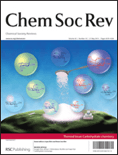
CHEMICAL SOCIETY REVIEWS
Elevating Knowledge in Chemical SciencesCHEMICAL SOCIETY REVIEWS, published by the Royal Society of Chemistry, serves as an essential platform for researchers, professionals, and students in the field of chemistry. Since its inception in 1972, this prestigious journal has maintained its status as a leading publication, currently positioned in the Q1 category for Chemistry (miscellaneous) and ranking #2 out of 408 journals in the field of General Chemistry on Scopus, with an impressive 99th percentile recognition. With a focus on comprehensive reviews that synthesize key advancements and methodologies, it promotes open discussion and critical analysis crucial for driving innovation within the discipline. Although it operates under a subscription model, the journal strives to foster knowledge dissemination among the global chemistry community, ensuring accessibility to cutting-edge research and insights that shape the future of chemical sciences through its extensive array of articles.

BULLETIN OF MATERIALS SCIENCE
Advancing the Frontiers of Materials ScienceBulletin of Materials Science, published by the Indian Academy of Sciences, is a distinguished journal that has been contributing to the field of materials science since its inception in 1979. With an ISSN of 0250-4707 and E-ISSN 0973-7669, it provides a platform for researchers to share groundbreaking studies and advancements in the mechanics of materials and general materials science. As of 2023, the journal holds a respectable Q3 ranking in both the Materials Science (miscellaneous) and Mechanics of Materials categories, highlighting its competitive position in the academic landscape. Although the journal currently does not operate under an open access model, it remains a vital resource for professionals and students keen on exploring innovative material developments and methodologies. With a commitment to promoting high-quality research, the Bulletin of Materials Science features rigorous peer-review processes, making it an essential reference for anyone engaged in the materials science domain.
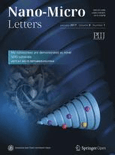
Nano-Micro Letters
Innovating the landscape of electrical engineering research.Nano-Micro Letters is a premier open-access journal published by Shanghai Jiao Tong University Press, specializing in groundbreaking research in the fields of Electrical and Electronic Engineering, Nanoscience, and Materials Science. Launched in 2009, this journal has rapidly established its reputation, achieving Q1 ranking across various categories, including Electronic, Optical and Magnetic Materials, and Surfaces, Coatings and Films, indicating its significant impact within the academic community. With an impressive Scopus ranking of #5 out of 797 in Electrical and Electronic Engineering and #2 in Surfaces, Coatings and Films, Nano-Micro Letters serves as a vital platform for disseminating cutting-edge insights and innovations in nanotechnology. Researchers, professionals, and students are encouraged to engage with the open-access content, fostering a collaborative environment that promotes the advancement of knowledge in these dynamic fields.
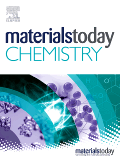
Materials Today Chemistry
Pioneering Research in Chemistry and MaterialsMaterials Today Chemistry, published by Elsevier Science Ltd, is a leading journal in the field of materials science, with a primary focus on innovative research and advancements in chemistry relating to materials. Operating under ISSN 2468-5194, the journal has made a significant impact in various specialized areas such as biomaterials, catalysis, colloid and surface chemistry, and polymers, achieving a Q1 ranking across these categories in 2023. With its commitment to high-quality, peer-reviewed content, Materials Today Chemistry serves as an essential platform for researchers, professionals, and students aiming to stay at the forefront of materials research. The journal provides an open access model, enabling wide dissemination of research findings and fostering collaboration among the scientific community. Its esteemed ranking on Scopus, including a remarkable percentile position in materials chemistry and catalysis, underscores its importance in advancing the understanding and application of novel materials. Whether you're delving into cutting-edge synthesis techniques or exploring the latest in materials applications, Materials Today Chemistry remains a pivotal resource for breakthrough discoveries and pivotal insights in the realm of materials science.

Small Methods
Pioneering new paths in nanotechnology and polymer science.Small Methods, published by WILEY-V C H VERLAG GMBH, is an esteemed peer-reviewed journal dedicated to advancing the fields of Chemistry and Materials Science. With a 2023 impact factor placing it in the Q1 category of both disciplines, and impressive Scopus rankings (27th in Materials Science and Chemistry), this journal serves as a vital platform for researchers and professionals alike to disseminate their innovative methodologies and pioneering experiments. Spanning a wide array of topics from nanotechnology to polymer science, Small Methods encourages the submission of high-quality research that illustrates novel small-scale methods applicable in various scientific contexts. Despite its absence of Open Access options, the journal is highly regarded for its rigorous editorial standards and comprehensive peer-review process, making it indispensable for students and academics aiming to stay at the forefront of these dynamic fields. With convergence years from 2017 to 2024, Small Methods continues to define the intersection of methodological innovation and practical application in both chemistry and material sciences.
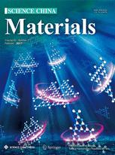
Science China-Materials
Innovating Tomorrow's Materials, Today.Science China-Materials is an esteemed peer-reviewed journal dedicated to advancing the field of materials science, published by SCIENCE PRESS. With a strong focus on innovative research and applications, this journal provides an essential platform for disseminating groundbreaking findings in materials development, characterization, and engineering. Since its inception, Science China-Materials has achieved an impressive Q1 ranking in the Materials Science (miscellaneous) category, reflecting its commitment to quality and the impact of its publications, as indicated by its 86th percentile ranking in Scopus. The journal is set to converge its contributions from 2016 to 2024, making it a vital resource for researchers and professionals interested in the latest advancements and trends in materials science. As an open access publication, it ensures that knowledge is freely available to a global audience, promoting collaboration and innovation across disciplines. The journal is headquartered in Beijing, China, and continues to attract high-quality submissions from leading experts in the field.
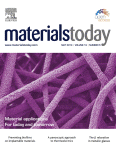
Materials Today
Illuminating the Future of Materials ScienceMaterials Today is a premier academic journal published by Elsevier Science Ltd, specializing in the dynamic fields of materials science, mechanical engineering, and condensed matter physics. Established in 1999, the journal has garnered an enviable reputation, consistently ranking in the Q1 category across multiple disciplines including mechanics of materials and general materials science, reflecting its influence and high-quality research output. With an impressive Scopus ranking—4th in both mechanical engineering and mechanics of materials, and 6th in condensed matter physics—Materials Today serves as an essential resource for researchers, professionals, and students seeking to stay at the forefront of developments in material innovations and applications. The journal is known for its commitment to publishing significant research findings and reviews, making it a vital platform for disseminating knowledge and fostering collaboration in the rapidly evolving materials field. Although it does not offer open access, its robust impact factor underscores the importance of the content published, ensuring wide visibility and citation among the academic community. Explore the rich tapestry of materials research with Materials Today, where groundbreaking insights pave the way for future technological advancements.

Materials Chemistry Frontiers
Bridging Science and Innovation in Materials ChemistryMaterials Chemistry Frontiers, published by the esteemed Royal Society of Chemistry, stands as a leading journal in the realm of materials science and chemistry, with an impressive Q1 ranking in both Materials Chemistry and Materials Science categories as of 2023. This open-access journal, operating from the United Kingdom, offers a platform for researchers, professionals, and students to disseminate high-quality, impactful research. With its E-ISSN 2052-1537, the journal is dedicated to publishing cutting-edge articles, reviews, and research communications that explore innovative materials and their applications, fostering a comprehensive understanding of the complex interplay between materials and their chemical properties. With consistent rankings in the Scopus metrics, being positioned at the 25th percentile among 317 in the Materials Chemistry category, it highlights its pivotal role in advancing the field. The journal thrives on contributions that broaden the scope of knowledge from 2017 to 2024 and beyond, solidifying its status as an essential resource for contemporary research in materials science.